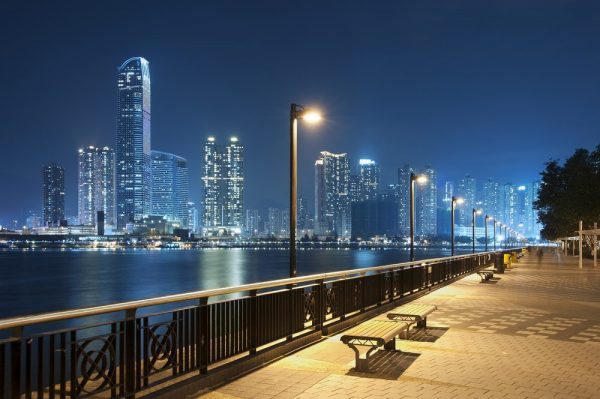In 2016, a new report from the U.S. Department of Energy projected massive growth for LED lighting usage.
The report, titled Energy Savings Forecast of Solid-State Lighting in General Illumination Applications, is the first instance the DOE has released a sales projection for Solid State Lighting for the next 19 years. LED bulbs are considered solid state lighting because they don’t use electrical filaments, gas or plasma, which are commonly found in incandescent bulbs.
According to the DOE, solid state lighting can potentially reduce electricity usage across the country by nearly 75 percent. The benefits are clear, and surprisingly, solid state lighting can still be considered new. Research and development of the technology can be traced to the Energy Policy Act of 2005 and Energy Independence Act and Security Act of 2007.
Future Forecasts
By 2035, LED lighting is projected to be part of approximately 86 percent of all installations, an eye-opening figure considering LEDs were only in 6 percent of installations at the time the first DOE study began in 2015.
Specific markets expected to experience higher adoption rates include:
- Low and high bay
- Roadway
- A-type bulbs
Many commercial and industrial operators are finding it financially beneficial to upgrade their lighting sooner rather than later. Companies that wait to convert old technology to LEDs waste money and time, highlighting just how important it is to act quickly.
Cities Discover Benefits
Cities and towns are quickly discovering the benefits of switching to LED lighting for applications with long operating hours. Cities that adopt LEDs will see the fastest payback due to enhanced energy savings. By 2035, cities will be able to reduce energy costs by 75 percent, which equates to $630 billion saved.
The DOE estimates that by 2025, approximately 90 percent of cities will have made the switch to LED bulbs. And 10 years later, nearly every city will be utilizing LEDs.
Connected Lighting to Take Off
Another driver of LED adoption in commercial sectors is connected lighting.
The Connected Lighting Alliance described the ability to control lights from cellular devices as a big selling point. Wireless technologies can save time and money, and allow users set lights to a timer, dim them or change a bulb’s color.
Furthermore, connected lighting can “talk” to HVAC systems, solar generators and electronic shades in order to share data to maximize energy savings.
Read more:
Outdoor Lighting and LED Retrofits: Less Intense for More Impact
Major Developments in LED Grow Lighting
Light Pollution 101: What is Light Trespass?
Tools Available to Help Contractors With Lighting Design
How to Calculate LED Lighting Retrofit ROI (With Tools and Formulas)
VIDEO: LED Lighting for Your Commercial Facility
Dusk to Dawn Fixtures are Seeing a New Light
VIDEO: LED Lighting for Your Industrial Facility
LED Lighting Grows Subtle Revenue for Car Dealerships While Saving Energy
Night Golfing? Yes, Please! LEDs Making it a Reality
E-commerce offerings:
(Contact a Customer Service Representative for additional selections, options, and solutions)
LED Street/Roadway
LED Emergency/Exit
LED Recessed Downlights
LED Fixtures
LED Drivers
LED Lamps
Wiring Devices and Lighting Controls
Call and speak with a Customer Service Representative, and let us help meet all of your supply needs (866-483-7289).
Did you know that any customer is eligible for online ordering? All you need to do is fill out this online form.
Key benefits include:
- Order anytime, 24/7, 365 days a year. If you can connect, you can place an order.
- Create order templates, aka “My Lists.” Reduce search time, click, order, done.
- Track purchase history and view your account information. You can review invoices any time, track purchase history, and print or download records.
